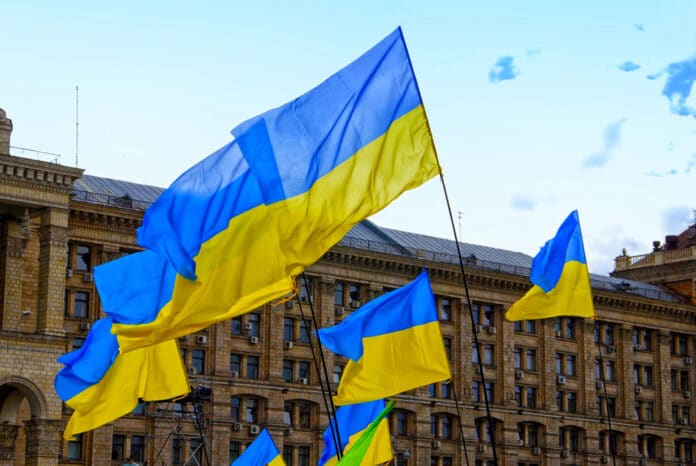
According to a recent report in the Washington Post, troops on the front line are running out of ammunition. Artillery shells are being rationed, forcing the Ukrainians to cancel planned assaults and making it hard to hold defensive positions against Russian attacks. A press officer for a Ukrainian battalion recently said that ammunition shortages had forced his unit to reduce its rate of firing by 90% since the summer. “We lack everything,” a member of another unit said. Although his comrades are highly motivated, he added, “You can’t win a war only on motivation.” He doubted they could hold their position much longer.
As Ukraine struggles, its allies dither. Congress went home for the holiday without resolving the legislative impasse over continuing U.S. aid for Ukraine. Hungary’s pro-Russian leader vetoed the European Union’s proposed $52 billion assistance package. If these logjams aren’t broken soon, Ukraine’s ability to sustain the war, its economy, and the basic functions of its government will be jeopardized.
This is an all-hands-on-deck emergency. If negotiators can’t reach a deal by the time the Senate reconvenes, President Biden must get directly involved. There is little doubt that an agreement would include provisions on immigration that many Democrats won’t like, but that’s the price he must pay for allowing the situation at the southern border to spin out of control. Meanwhile, European nations must muster the political will to provide Kyiv with country-to-country aid if bribes and threats can’t force Hungarian Prime Minister Viktor Orbán to end his opposition to the EU plan.
The West also must seize frozen Russian central-bank assets in Western financial institutions and use them for Ukraine’s benefit. In November, the House Foreign Affairs Committee advanced a measure to do this by a vote of 40-2, and a similar proposal received unanimous support from a European Parliament committee. Until recently, senior Biden administration officials had expressed concerns that seizing Russian assets would set a precedent with unpredictable consequences. But as Ukraine’s plight has worsened, the administration has intensified discussions with European allies about a coordinated strategy to redeploy Russian assets on Ukraine’s behalf, with a target date of Feb. 24—the second anniversary of the Russian invasion—to reach an agreement. Mr. Biden should spare no effort to ensure the success of these talks.
Even if aid for Ukraine is renewed, it is essential to consider a realistic ending for the war. Ukraine’s insistence on regaining all the territory Russia has seized since 2014 is understandable and legally impeccable, but events over the past year have made it clear that this goal can’t be achieved anytime soon. Ukraine’s vaunted counteroffensive failed as Russia’s reinforced defenses held. Russia’s economy has proved more resilient than expected, and it is ramping up military production much faster than Ukraine and its allies. The conflict has exposed the hollowing out of the West’s defense industrial base, in Europe especially and to a considerable extent in the U.S. The West’s collective inability to provide Ukraine with the artillery shells it needs is evidence of neglect that will take years to remedy.
Ukrainian President Volodymyr Zelensky recently disclosed that Ukraine’s military leaders wanted to mobilize an additional 500,000 troops, which would require unpopular changes to Ukraine’s draft laws and additional outlays of $13 billion. While Russian President Vladimir Putin has also been mindful of political considerations, Russia’s manpower pool is about four times the size of Ukraine’s, and its economy is nine times as large.
Recent reports, which Mr. Putin hasn’t denied, suggest that he is ready to agree to a cease-fire along the current battle lines. Although he is unwilling to retreat, these reports indicate that he had shelved his aim to dominate all of Ukraine.
There are good reasons to be skeptical that Mr. Putin has pared his ambitions in Ukraine, which are part of his plan to reconstitute the Soviet empire, the collapse of which he has termed the greatest geopolitical catastrophe of the 20th century. Still, Western leaders should explore whether he is serious about ending the fighting. It would be unwise to assume that public opinion in the West will indefinitely support an open-ended commitment to a conflict that has settled into a stalemate.
A cease-fire wouldn’t imply recognition of Russia’s territorial claims, and it would open the door to measures that would anchor Ukraine to the West, including eventual membership in the EU and North Atlantic Treaty Organization. In the meantime, Russia’s frozen assets could be used to reconstruct Ukraine.
This arrangement would be a bitter pill both for the Ukrainians, who are passionate about regaining all their territory, and for Mr. Putin, who fears the prospect of a new power linked to the West on Russia’s border. But it is the only realistic path to a lasting peace in Europe.






